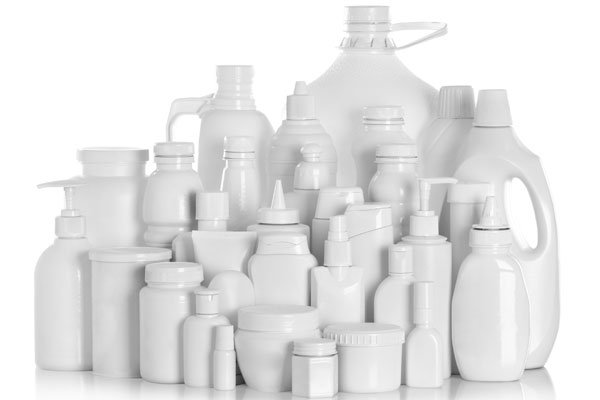Polympart: At this point, recycling won’t save us. But there are some other scientific innovations that might. This is not a good look. Humans are using more oil-based plastic than ever, with devastating environmental consequences. It is not altogether clear how we reverse what has become known as the plastic pandemic.
Mix of potential solutions
At the moment, humanity is experimenting with a mix of potential solutions, including bans, taxes and shifting everyday stuff out of plastic into more “eco-friendly” materials. But still, the emphasis is on the traditional and deeply flawed solution: recycling. In truth, there are few good plastics alternatives that work on a large scale, and the systems of collecting, sorting and recycling plastic need huge investment and reform.
But what if there were a remedy that meant we could still have plastic in some everyday formats without the long-term effect? What if plastic trash could just disappear? It’s a concept that seems straight out of science fiction, but it’s actually got scientific heft and deserves more attention.
New scientific innovations could help solve our plastic trash crisis.
In April, the internet went bonkers over the story of an international team of scientists studying a plastic-eating enzyme. The scientists accidentally engineered the enzyme to work faster and more efficiently. Though it doesn’t actually make plastic vanish, it could revolutionize recycling efforts.
The discovery was a breakthrough: Given the volume of plastic trash we’re dealing with, we need speed and scale to make a dent in the problem.
At this point, more than 300 million tons of brand-new plastic are created each year. Over 80 million tons of this becomes plastic packaging, and 30 percent of that will quickly become “fugitive,” meaning it will escape the systems designed to collect it and will pile up in the environment. Less than 20 percent of global plastic waste gets recycled. The rest will go to landfills or an incinerator.
Disappearing plastic is not new. One of the earliest programs to engineer it came in the 1970s.
British chemist Gerald Scott, alarmed by the increasing use of plastic packaging in consumer economies, dedicated himself to creating plastic that would break down when exposed to constant light.
He found that by adding a certain compound to plastic products, he could make them degrade in a relatively short time. A cup made from Scott’s “vanishing plastic,” as it was nicknamed by the media, would begin to crumble after a week or two; by two months, it would ― at least to the naked eye ― disappear.
Manufacturers, retailers and trade associations for the plastics industry poured cold water on Scott’s self-destroying plastic. This powerful alliance argued that Scott’s invention would mess with the economics of production and that developing his idea was too expensive.
They argued the plastic litter problem was a small price to pay for the great win of convenience. Incredibly, with hindsight, the U.K.’s Science Research Council withheld promised funding unless Scott would agree to help make plastic more durable instead (the exact opposite of his mission). He refused.
The truth is, there was an opportunity here for chemists to be part of the solution nearly 50 years ago. The opportunity was missed and vanishing plastics was consigned to a niche, underfunded area of experimentation with a patchy legacy.
Today plastics on the market claiming to be biodegradable and compostable often fail to live up to the hype, leaving dangerous toxic trails, as they do not achieve total biodegradation and can’t be absorbed into the biological cycle. A 2016 United Nations report condemned so-called green plastics as a nuisance that only truly degrade in industrial composters.
Another rather eccentric problem was that Scott included a warning signal in his plastic ― it turned a violent shade of purple when the degradation process was beginning. That also weirded people out.

Less than 20 percent of global plastic waste gets recycled. The rest will go to landfills or an incinerator.
Scott’s experiments stand as a reminder that manufacturers and retailers won’t take opportunities to stop the plastic pandemic unless consumers believe in the method.
A similar fail occurred in 2010. Frito-Lay announced its SunChips brand would switch to compostable packaging. On the surface, this looked like a revolution: The average chip bag is made up of multiple thin layers of plastic polymers, which are too complex and expensive to recycle on a massive scale.
But few places have the infrastructure to manage compostable plastic packaging. In truth, they need the temperatures found in industrial composting facilities to make good on their promise to become soil-enriching compost. In order to access those limited numbers of facilities, the plastics would need to be gathered up in dedicated collections, also lacking.
But these concerns aren’t what killed the green SunChips bags. People hated them because they were noisy.
Yes, you read that correctly. The revolutionary corn-based plastic used for the new packets happened to increase the noise levels of chip bag usage to 85 to 95 decibels ― soaring above the typical 75 decibels for a mainstream chip bag. Though the manufacturer tried adding a motivational sticker to bags reading, “This is what change sounds like,” consumers never accepted the idea. SunChips quietly shelved the experiment.
This New World
The current capitalist system is broken. Get updates on our progress toward building a fairer world.
But what if a vanishing plastic product looked, felt and acted like a regular plastic product? What if it could also guarantee that it would truly biodegrade in any context, whether the product went to a landfill or escaped into the ocean?
At the London laboratory of British-based technology company Polymateria, researchers are working on this holy grail, a plastic that guarantees total biodegradation and a complete return to the biological cycle. They claim to be getting close.
Basically, Polymateria is working to alter plastic at a molecular level. The technology lies dormant when the product ― let’s say it’s a plastic cup ― is on a store shelf or in use by a consumer. The cup can even be recycled like normal. But if the cup escapes, becomes fugitive plastic, biodegradation is triggered. At this point, the technology opens up the polymer chain so the natural agents of decay ― ultraviolet light, moisture, air and microbes ― can set to work. Or if the plastic ends up in a recycling bin, that’s fine too. Polymateria calls this “seat belt technology,” reflecting the fact that every eventuality would be covered.
Polymateria’s main hurdle will be to win trust. If it does persuade manufacturers to use its technology, then consumers could soon be handling products ― from hot drinks to chip bags to fruit netting ― that promise total biodegradability.
But what about the billions of tons of plastics that are already sitting in trash heaps around the globe? Last January, China stopped accepting imports of low-quality plastics from all over the world, and suddenly plastics began piling up at ports and overwhelmed recycling facilities. We can’t reverse-engineer the plastics that already exists to make them easier and faster to recycle. Or can we?
Recyclable waste is piling up since China shut its doors to low-grade imports of plastic trash. Now countries that used to rely on this relationship, such as the U.S., are scrambling for alternatives.
That’s where enzymes might come in.
Professor John McGeehan of the University of Portsmouth in the U.K. helped lead the international research team responsible for improving an enzyme discovered in 2016 that “eats” plastic. The enzyme turbo-charged by McGeehan’s team is spectacularly good at devouring the binds of the polymer in PET, one of the most widely used plastics, commonly found in single-use drink bottles. The enzyme, known as PETease, leaves behind the monomers, the building blocks of the plastic. These can be recycled into high-quality products.
A problem with standard recycling is that the process degrades the plastic polymer. Therefore, manufacturers of new products typically mix just a small percentage of recycled plastic in with the new. Plastic recovered from a bottle will travel down the value chain and be mixed into, say, carpets or synthetic clothing fiber. Once mixed in in this way, the plastic is unlikely to be recovered and recycled again. PETease has the potential to change the rules. The monomer extracted from a bottle could end up in an aircraft or a car, traveling up the value chain. This could, in theory, help curb production of virgin plastic.
A recycling center in Britain is performing trials on PETease. But other enzymes will be needed for other types of plastics.
“Enzymes work like a lock and key,” explains McGeehan. “They recognize the shape and structure of the polymer.”
“If you look at the grid of 10 common types of plastic, we’re on No. 1,” he notes, putting things in perspective.
The race is now on as his colleagues scour the globe in search of more enzymes that will devour other plastics. As those are found and produced at scale, they could be deployed on piles of mixed plastics at recycling and waste facilities.
Here’s another boon: Enzymes are routinely used in consumer goods; for example, in laundry detergents to boost dirt-removal. Industry already understands and values them. This means researchers can call on industry and use their facilities to scale production of plastic-eating enzymes. It’s a volume thing: Many enzymes make light work. While a scientist could take five to 10 years to produce enough enzymes to deploy on rubbish, an industrial vat can do it in months.
Professor John McGeehan is working on enzyme solutions to plastic waste.
But not everybody is on board with enzymes.
McGeehan recently received an email from the U.S. owner of a high-performance car, noting that his cherished car was predominantly made from plastics. If he woke up one morning to find that the car had been devoured by McGeehan’s plastic-eating enzyme, he wanted the professor to know, he would hold him personally responsible.
Back in the day, this fear was also leveled at professor Gerald Scott, the godfather of vanishing plastic. His discovery also coincided with the broadcast of a hit science-fiction TV show, “Doomwatch.” In one episode, a secret ingredient made to destroy plastic accidentally gets out and eats an airborne plane.
It’s yet another reminder that from noisy chip bags to enzymes set on world domination, the consumer’s trust will need to be won.
This series is funded by SC Johnson. All content is editorially independent, with no influence or input from the company.
Source: https://www.huffingtonpost.com/entry/plastic-waste-science-solutions_us_5c12b3e5e4b0860b8b5c863c
